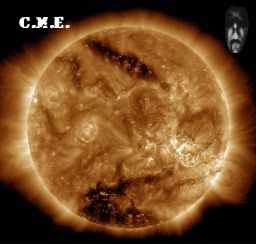A.K.A. Degenerate dwarfs
The stars called degenerate dwarfs or, more usually, white dwarfs are made up mainly of degenerate matter—typically, carbon and oxygen nuclei in a sea of degenerate electrons. White dwarfs arise from the cores of main-sequence stars and are therefore very hot when they are formed. As they cool they will redden and dim until they eventually become dark black dwarfs. White dwarfs were observed in the 19th century, but the extremely high densities and pressures they contain were not explained until the 1920s.

The equation of state for degenerate matter is “soft”, meaning that adding more mass will result in a smaller object. Continuing to add mass to what is now a white dwarf, the object shrinks and the central density becomes even larger, with higher degenerate-electron energies. The star’s radius has now shrunk to only a few thousand kilometers, and the mass is approaching the theoretical upper limit of the mass of a white dwarf, the Chandrasekhar limit, about 1.4 times the mass of the Sun (M☉).
If we were to take matter from the center of our white dwarf and slowly start to compress it, we would first see electrons forced to combine with nuclei, changing their protons to neutrons by inverse beta decay.
The equilibrium would shift towards heavier, neutron-richer nuclei that are not stable at everyday densities. As the density increases, these nuclei become still larger and less well-bound. At a critical density of about 4·1014 kg/m³, called the neutron drip line, the atomic nucleus would tend to fall apart into protons and neutrons. Eventually we would reach a point where the matter is on the order of the density (~2·1017 kg/m³) of an atomic nucleus. At this point the matter is chiefly free neutrons, with a small amount of protons and electrons.
Source



















You must be logged in to post a comment.